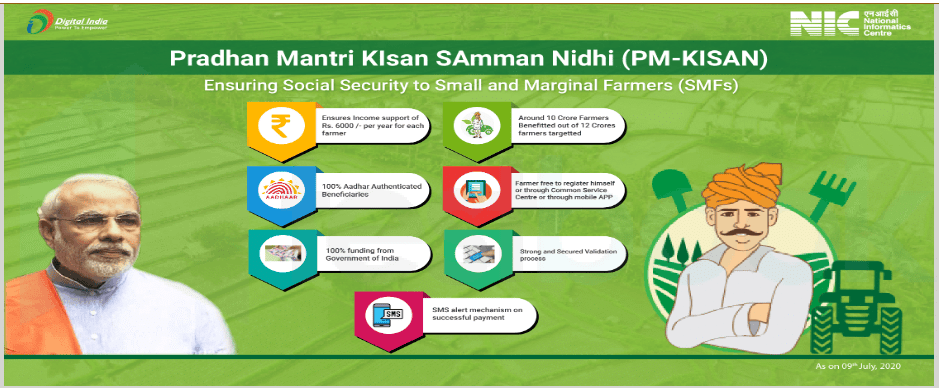OPSC OAS Prelims Paper 1 Mock Test - 5 - OPSC OCS (Odisha) MCQ
30 Questions MCQ Test - OPSC OAS Prelims Paper 1 Mock Test - 5
With reference to Mahatma Gandhi National Rural Employment Guarantee Act, consider the following statements:
1. Every adult household member in a rural area who has a job card is qualified for employment under the scheme.
2. The scheme provides 100 days of guaranteed wage employment in a financial year to adult member volunteers for unskilled manual work.
3. All districts in India are included, with the exception of those where the urban population outnumbers the rural population.
4. The States may make provisions for providing additional days beyond the period guaranteed under the Act.
Which of the statements given above is/are correct?
Who became the president of the Congress immediately after the resignation of Subhash Chandra Bose from the president's post in April 1939?
From where does the Salaries and Allowances of the Council of Ministers of the State Government are paid?
With reference to the Three Round Table Conferences of 1930-1932 consider the following statements:
1. This was the first conference arranged between the British and the Indians as equals.
2. The Indian National Congress attended only the second round table conference held in 1931.
3. Sarojini Naidu represented women in all three conferences.
4. The result of these deliberations was the Government of India Act, 1935.
Which of the statements given above is/ are correct?
Which one of the following was not the main proposal of Cripps Mission?
Consider the followings:
1. High levels of inflation
2. High unemployment
3. Very slow growth
4. High level of growth
Which of the above is/are characteristic of Stagflation?
The Phansad Wildlife Sanctuary is well-known for its extensive biodiversity and is situated in which western state of India?
The removal of carbon dioxide from the earth's atmosphere and the provision of long term storage of carbon in the terrestrial biosphere is known as-
Which of the following is NOT a freshwater lake in India?
Which of the following is/are functions of UPSC?
1. It is consulted on all matters relating to methods of recruitment to civil services and for civil posts.
2. It assists States in framing and operating schemes of joint recruitment for any services for which candidates possessing special qualifications are required.
3. It is consulted as respects how any provision referred to in clause (4) of article 16 in which effect may be given to the provisions of article 335.
Select the correct code given below.
Which of the following pairs are matched correctly?

Choose the correct answer using the following codes:
In the context of Ancient Indian history, Panchasiddhantaka was written by
Which among the following is responsible for depletion of ozone layer?
With reference to the Indian economy, the term unorganized worker has been defined under
Which of the following statements regarding the Organic Farming is/are incorrect?
Which of the following was/were the cause of the Quit India Movement 1942?
1. Failure of Cripps Mission.
2. Involvement of India in World War II without consultation.
3. Growth of anti-British Sentiments.
4. Failure of Round Table Conference.
Select the correct answers from the code given below.
Consider the following:
1. India
2. Qatar
3. Afghanistan
4. Iran
5. China
Which of the above countries share a border with Balochistan?
Consider the following statements regarding the Pradhan Mantri Kisan Samman Nidhi (PM-KISAN) scheme:
1. Under the PM-KISAN scheme, all landholding farmer families are provided income support of ₹6,000 per year.
2. The financial benefit under the scheme is paid directly into the bank accounts of the beneficiaries.
3. The PM-KISAN scheme is fully funded by the state governments.
Which of the statements given above is/are correct?
Which of the following funds is/are administered by the World Bank?
1. Clean Technology Fund
2. Special Climate Change Fund
3. Least Developed Countries Fund
4. BioCarbon Fund
Select the correct answer using the code given below.
Which of the following zones lie between the Tropic of Cancer and the Tropic of Capricorn?
The phenomenon of rainbow formation by water droplets involves :
Which of the following statements is incorrect regarding Gram Sabha?
Consider the following statements regarding the role of the Himalayas in the Indian climate:
1. It acts like a climate separator.
2. It blocks the cold winter storms of East Asia and Siberia from entering India, thus protecting us from severe cold
3. It rarely traps the monsoon winds from the Arabian sea and the Bay of Bengal.
4. The Himalayas splits the westerly jet streams into two branches.
Which of the statements given above is/are correct?
Which of the following are characteristics of Succession?
1. Decreased productivity
2. Shift of nutrients from’ the reservoirs
3. Increased diversity of organisms
4. Increase in the complexity of food webs
Select the correct answer using the code given below:
A massive volcano named Noctis Mons is discovered on which planet?
There has been a persistent deficit budget year after year. Which action/actions of the following can be taken by the Government to reduce the deficit?
- Reducing revenue expenditure
- Introducing new welfare schemes
- Rationalizing subsidies
- Reducing import duty
Select the correct answer using the code given below.
What is the primary cause of ocean acidification?
Which of the following phrases defines the term 'Jayaskandhavara' generally referred to in the sources of the post-Harsha period?
India is located east of Greenwich at 82° 30' 'E. What will be Indian Standard Time (IST) if Greenwich Mean Time is 1 PM?
























